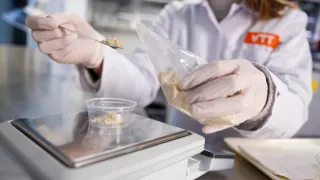The goal of metrology in chemistry is to improve and verify the reliability and traceability of chemical measurements to SI units. To support this, the Chemistry Section of the Advisory Commission for Metrology has updated two guides: Metrology in chemistry and Metrology in qualitative chemistry and made one new guide Calculation of uncertainty in microbiological methods. All guides are in Finnish. Below are brief descriptions of the contents of the guides.
Metrology in Chemistry
Kemian metrologia
The aim of this updated guide is to give an overview of the principles and procedures of metrology in chemistry and to introduce readers to international in-depth literature, which have been published, for example, through Eurachem and CITAC. The guide covers traceability of chemical measurements, evaluation of measurement uncertainty, method validation and verification, reference materials, demonstration of competence, internal quality assurance, and metrology of continuous measurements.
Metrology in qualitative chemistry
Kvalitatiivisen kemian metrologia
Unlike the Metrology in chemistry guide, which focuses mainly on quantitative analysis methods, this guide addresses metrology in qualitative analysis. Qualitative analysis can be defined, for example, as an analytical method that identifies a compound based on its chemical, biological or physical properties. The guide focuses mainly on spectrometric analytical methods, especially mass spectrometry, but the criteria for identification and traceability of qualitative analysis outlined in the guide apply to all analytical methods.
The guide discusses the principles and reliability bases of qualitative analysis methods, the reliability criteria of spectral libraries, spectral identification criteria, spectra interpretation, and the steps of the spectra identification procedure in the analysis of target compounds.
Calculation of uncertainty in microbiological methods - Food, water and housing health
Mikrobiologisten menetelmien epävarmuuden laskeminen - Elintarvikkeet, vesi ja asumisterveys
Because not all factors affecting the measurement can be fully known, every measurable result is subject to measurement uncertainty that represents the range of possible variations in the results. This guide enables the use of uniform procedures in evaluating the measurement uncertainty in microbiological methods. The guide is particularly intended for routine laboratories that need a procedure to estimate the uncertainty of measurement results.
The guide discusses the calculation of the measurement uncertainty for quantitative food, water and housing health methods, reporting measurement uncertainty information to customers and using it in the interpretation of results, and maintaining of measurement uncertainty information.





